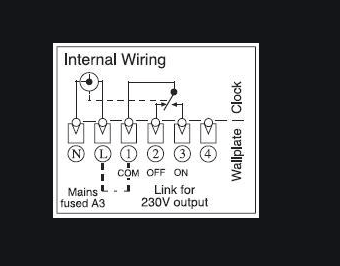DrPhill
Cyber Heretic
- Joined
- 15 Feb 2012
- Messages
- 1,154
- Reaction score
- 314
Hi there all,. Any central heating experts around?
I just wanted to know if my timer - Drayton (nee AES) LP111 can easily be replaced by a thermostat timer.
It is not in the ideal position for a thermostat, but it will do. I don't want to do a lot of rewiring as the boiler is on its last legs and due to be replaced. The last time I did this (a previous house 20+ years ago) I just took the old box off the wall and wired the new one in. I had some instructions from the manufacturer which helped. There were only four wires involved, one of which was hot IIRC.
Drayton have the wiring diagram for their new boxes but not for their simpler timer boxes. The new box has four wires, one of which is live. As my existing timer has a display (and no battery?) I guess it must draw power from a live wire suggesting that it, too, will have four wires like all the rest. If I can identify those wires on the old unit, I can just connect them to the new unit.
Does this sound feasible? Or are there some hidden complexities that I am missing?
Thanks in advance for any help.
Phill
I just wanted to know if my timer - Drayton (nee AES) LP111 can easily be replaced by a thermostat timer.
It is not in the ideal position for a thermostat, but it will do. I don't want to do a lot of rewiring as the boiler is on its last legs and due to be replaced. The last time I did this (a previous house 20+ years ago) I just took the old box off the wall and wired the new one in. I had some instructions from the manufacturer which helped. There were only four wires involved, one of which was hot IIRC.
Drayton have the wiring diagram for their new boxes but not for their simpler timer boxes. The new box has four wires, one of which is live. As my existing timer has a display (and no battery?) I guess it must draw power from a live wire suggesting that it, too, will have four wires like all the rest. If I can identify those wires on the old unit, I can just connect them to the new unit.
Does this sound feasible? Or are there some hidden complexities that I am missing?
Thanks in advance for any help.
Phill


































